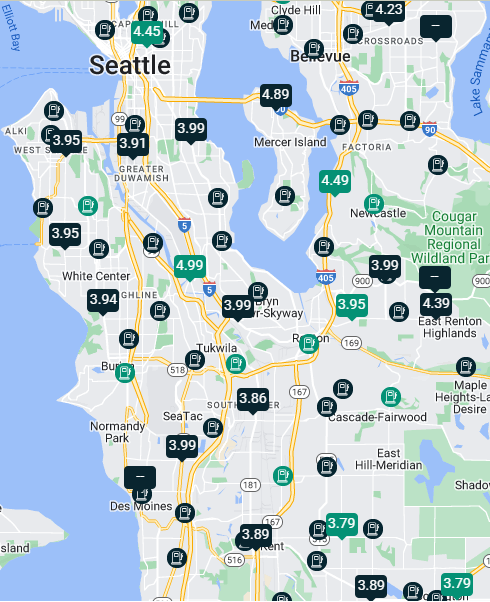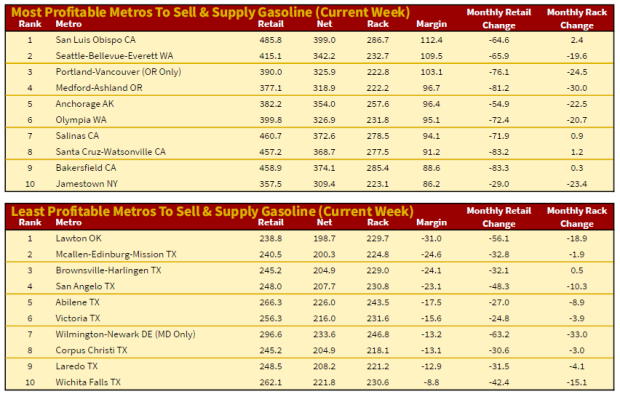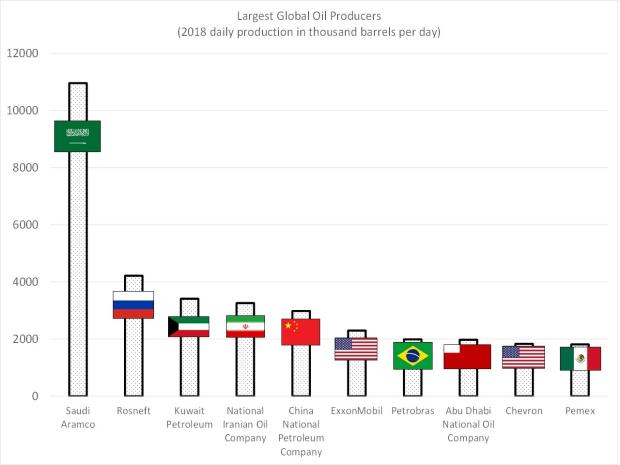Update: In late June 2023, Washington state made headlines for its high fuel prices, and the oil industry immediately kicked its PR machine into high gear to shift blame to our state's landmark climate protection policy, the Climate Commitment Act. This blame-shifting is a tried and true tactic to shift attention away from the real issue—the fossil fuel industry's exorbitant profits. The oil industry could easily swallow any costs of complying with pollution-reduction regulations, and still bring in exorbitant profits—including in Washington where fuel retailers consistently bring in a higher margin than most other parts of the country. This article is more relevant now than ever.
Whenever we take action on climate change or when anxieties about high gas prices are on the top of our minds (when are they not?), there always seems to arise a familiar chorus: clean energy policies are to blame.
Who’s leading the chorus of blame? Who's trying to convince us that climate and clean energy policies are responsible for volatile fuel prices? Often, it’s oil companies and their front groups, manufacturing controversy and using scare tactics in order to protect their high profits. To cut through the noise, it’s helpful to understand how fossil fuel prices actually work; so let’s dive into what goes into the price of gas or diesel at the pump.
Oil companies bring in record high oil profits while we’re at the whim of volatile prices.
One only needs to survey recent headlines to understand that oil companies are absolutely raking in cash: “Big Oil's good times set to roll on after record 2022 profits,” “Exxon announced record earnings,” “Shell adds to oil industry’s record profits, with $41.6 billion,” and, egregiously, “BP scales back climate targets as profits hit record.” These profits are reflected in the price of a barrel of crude oil, which makes up the largest share of the price at the pump.
Crude oil is a global commodity. In other words, the price of a barrel of oil on any given day is more or less the same everywhere. As I write this, the trading price of crude is hovering around $80 per barrel. According to Dr. Severin Borenstein, an expert on oil price economics, most of the crude oil in the world can be produced for less than $20 a barrel; in the U.S., the production price is closer to $40, so $80 is a pretty rich return. Where do those profits go? To the oil producers.
After crude oil is extracted and traded, it goes to refineries where it is processed, then is distributed to retailers. It’s well known that the price of gas is volatile over time. Additionally, within even a small area prices can vary tremendously. Currently, gas prices in the Seattle area vary by more than $1/gallon.
Gas Buddy price map, accessed February 10, 2023
Gas prices also vary widely across the country. Washington residents are forced to pay some of the highest profit margins in the country. Fuel profit margins in the Seattle area are over $1 per gallon, according to the Oil Pricing Information Service (OPIS). Despite gas prices skyrocketing in the past year, this profit margin is over 30% higher than it was in the first quarter of 2020, when it was 77 cents per gallon. The Seattle area consistently ranks in the top five most profitable metro areas to sell gas, and Washington is also one of the most profitable states for the oil industry in the country.
Source: Oil Pricing Information Service, December 2022
The oil industry artificially adjusts supply to keep profits high.
Oil producers are able to increase prices by limiting supply because the oil market fluctuates due to supply and demand. It’s simple economic theory: as supply decreases, prices go up. If supply increases, prices go down–as long as demand remains stable.
Since the price of crude oil is the largest input into the price at the pump, fluctuations in this market have a massive impact. The major oil producers are making off with high profits, and are manipulating the market in order to do this.
The top two oil producing countries, via state-owned companies, are Saudi Arabia and Russia – both countries known for serious human rights abuses. Both Saudi Arabia and Russia are members of the cartel OPEC+, which consists of 23 oil producing member countries, none of which are considered free under Freedom House’s Global Freedom Scores. Recently, the cartel has conspired to artificially constrain supply to raise prices. Keeping oil prices high benefits the Russian government greatly; its budget is pegged to the price of oil, and its oil revenues are being used to fund the country’s abominable full-scale invasion of Ukraine. Meanwhile, western oil companies are also benefiting from the heightened trading price of crude, while we pay.
Even though the global trading price of crude oil is the largest input into the price at the pump, refining costs and profits, distribution, local taxes, and local gas station operating costs and profits all factor in. Nearly every stage gives those involved in the oil industry opportunities to do what happens in a market: charging the highest price they can. The resulting consumer cost of gas fluctuates over time, which is why we often see higher gas prices during the summer travel season when there is more demand. Conversely, when there is lower demand for gas and diesel, prices go down.
Climate policy is not what drives the price at the pump.
The oil industry is able to charge exorbitant prices because of our current reliance on oil and the industry’s near-monopoly on transportation fuel. When a new climate or clean energy policy is supposed to impose new costs on oil companies’ business, the companies could attempt to pass those costs on to customers. But if customers are unwilling to pay more, and instead choose alternative, cleaner options, then the cost of regulations will take bites from the oil companies’ exorbitant profits.
This fact doesn’t stop the oil industry from lying, or from making excuses to levy higher prices. Last year, before Washington’s Climate Commitment Act and Clean Fuel Standard even went into effect, the state began to receive reports of huge markups in fuel sectors that are not even covered by these policies. Certain vendors of fuel for maritime vessels, for example, reportedly increased prices by about 40 cents per gallon. Blaming such mark-ups on policies that don’t apply to a particular sector, and in any case have not even been implemented, is simply dishonest.
The oil industry commonly uses this kind of fearmongering in efforts to prevent elected officials from enacting new climate and clean energy measures. In fact, the Western States Petroleum Association, via a front group, spent over a million dollars at the Washington Legislature trying to block climate policies, claiming they would increase the price of gas at the pump. These claims are generally false and unfounded. For example, the oil industry claimed that Washington’s Clean Fuel Standard would increase the price of gas (by how much? They made different claims at different times). However, in California, which has had such a standard for a decade, price changes of gas and diesel are uncorrelated with the cost of credits under their Clean Fuels program.
Setting aside these falsehoods, we must ask the real question: why is the oil industry opposing these policies? And would they really want to advocate against their own profit generation? They certainly don’t seem to actually care about gas prices at the pump and their impact on people. Last summer’s experience of high prices paired with record-high industry profits affirms this. The real reason the oil industry opposes these policies is because they threaten its near-monopoly on transportation fuel by granting Washingtonians increasing access to alternatives such as clean electricity. And, as demand for gas and diesel decreases, so will fossil fuel profits; oil companies can only charge what consumers will bear.
The next time you hear a chorus of oil companies and their allies railing against climate policy, keep their motivations and high profit margins in mind. They want to keep people bound to their expensive product, instead of having the freedom to choose the cheaper alternatives that strong climate policies will unlock for many. Using an electric vehicle provides average savings of $1,800 to $2,600 annually, and the ability to instead choose transit or move around without a vehicle saves even more money. Providing access to these opportunities is what will really bring down our transportation costs, not folding to oil industry fear-mongering.
Using locally-produced, clean energy to power our transportation system will reduce the pollution that causes climate change. It will also free us from the anxiety of volatile, often high gas prices, and feed our local economy instead of faraway oil companies and bad actors.








